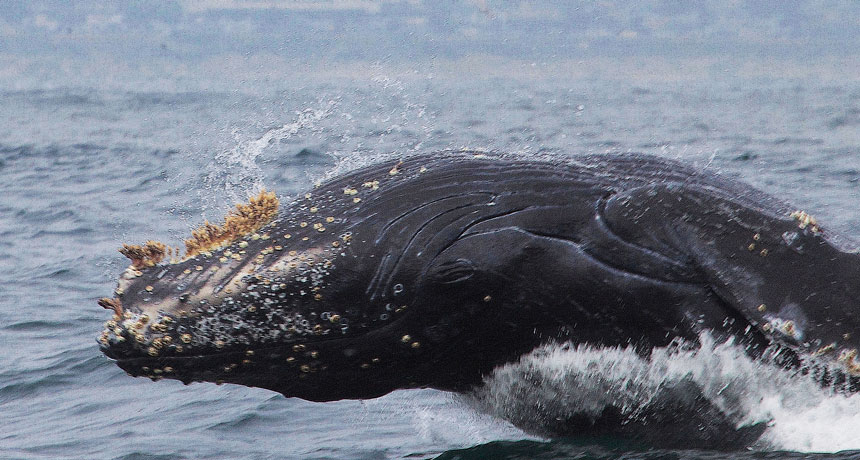Barnacles track whale migration
Chemical composition of hitchhikers’ shells might reveal ancient baleen travel routes

BARNACLE BIOGRAPHY The barnacles that latch on to baleen whales, such as this humpback, may offer a record of their hosts’ movements, even millions of years later, new research suggests.
Gregory "Slobirdr" Smith/Flickr (CC BY-SA 2.0)